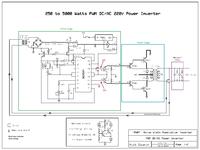Ogu Reginald
Full Member level 6
Hi, I am working on a project that involves 10KVA inverter and I will like to use this medium to share my expereince/knowledge on inverter. Please correct me where possible if I make mistake.
1. Every inverter has an oscillatory circuit, current handling/amplification circuit(transistors or other semi conductor) and the output transformer.
2. The output power of an invereter is directly proportional to the size and numbers of semi conductors used and also to the size of the output transformer.
I am confused on the IC to use for the oscillatory circuit? please help me with a good IC also state the reason for choosing the IC.
- - - Updated - - -
Also help me with the type of transistor to use whether (BJT or MOSFET) give reason for choosing each one and tell me how many will be sufficient for the design. Adding circuit diagrams and project reports will be of great help, thank you.
1. Every inverter has an oscillatory circuit, current handling/amplification circuit(transistors or other semi conductor) and the output transformer.
2. The output power of an invereter is directly proportional to the size and numbers of semi conductors used and also to the size of the output transformer.
I am confused on the IC to use for the oscillatory circuit? please help me with a good IC also state the reason for choosing the IC.
- - - Updated - - -
Also help me with the type of transistor to use whether (BJT or MOSFET) give reason for choosing each one and tell me how many will be sufficient for the design. Adding circuit diagrams and project reports will be of great help, thank you.

